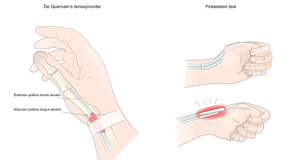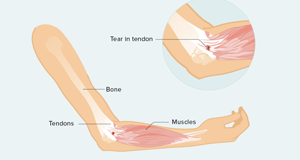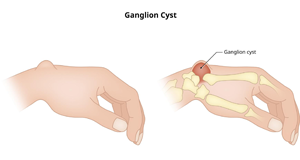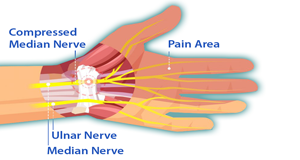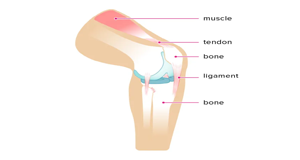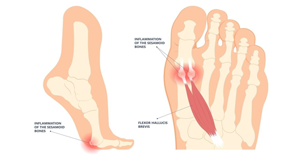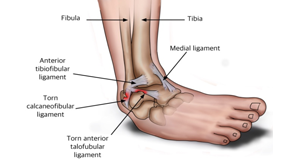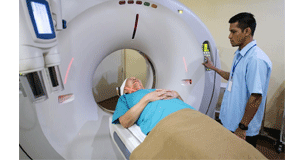Tendon Tears Tendon Tears of Hand and Wrist can cause pain, stiffness, swelling and tenderness. Your hands are among the most complex parts of your body, which means you need specialized care after a tendon injury in your hand or fingers. If you do injure the tendons in your hand or wrist, you may have trouble bending or straightening your ...
Read More »Blog
Tendinitis of Hand and Wrist
Tendinitis of Hand and Wrist Tendinitis of Hand and Wrist can cause pain, stiffness, swelling and tenderness. Your hands are among the most complex parts of your body, which means you need specialized care after a tendon injury in your hand or fingers. If you do injure the tendons in your hand or wrist, you may have trouble bending or ...
Read More »Ganglion Cyst
Ganglion Cyst A Ganglion Cyst is a fluid-filled lump under the skin. It is often found over a joint or in a tendon in the hand or wrist. A ganglion cyst forms when there is a small tear in the sleeve of thin tissue that covers a joint or tendon. The tissue bulges and forms a sac. Fluid from the ...
Read More »Carpal Tunnel Syndrome
Carpal Tunnel Syndrome Carpal tunnel syndrome is caused by pressure on the median nerve. The carpal tunnel is a narrow passageway surrounded by bones and ligaments on the palm side of the hand. When the median nerve is compressed, symptoms can include numbness, tingling, and weakness in the hand and arm. CTS is a common neurological disorder that occurs when ...
Read More »Tendon or ligament injury of Hand
Tendon or ligament injury of Hand and Wrist Ligament injury of hand is very common, because it gets so much use and thus is exposed to many possibilities for injury. One common place for a hand ligament injury to occur is in the scapholunate ligament.Ligaments are tough pieces of connective tissue that join one bone to another. Ligaments are attached ...
Read More »Sesamoiditis
Sesamoiditis Sesamoiditis is an inflammation of the sesamoid bones in the ball of the foot and the tendons they are embedded in. It’s usually caused by overuse, especially by dancers, runners and athletes who frequently bear weight on the balls of their feet. It’s treated with rest and anti-inflammatory medication. Sesamoiditis is a specific kind of tendonitis — inflammation of ...
Read More »Tarsal tunnel syndrome
Tarsal Tunnel Syndrome The tarsal tunnel syndrome is caused by a compression of the posterior tibial nerve and causes pain, tingling or numbness in the foot. TTS occurs when you have tibial nerve damage. Your tibial nerve runs through your tarsal tunnel, a passage of bones and ligaments in your ankle. TTS symptoms may include pain, burning or tingling in ...
Read More »Sprains
Sprains A Sprain injures the bands of tissue that connect two bones together. Sprains injures the bands of tissue that connect two bones together. Sprain is stretching or tearing of ligaments — the tough bands of fibrous tissue that connect two bones together in your joints. The most common location for a sprain is in your ankle. The difference between ...
Read More »Bone Marrow Biopsy
Bone Marrow Biopsy Bone marrow biopsy are procedures to collect and examine bone marrow — the spongy tissue inside some of your larger bones. It can show whether your bone marrow is healthy and making normal amounts of blood cells. Doctors use these procedures to diagnose and monitor blood and marrow diseases, including some cancers, as well as fevers of ...
Read More »Computed Tomography CT or CAT Scan of the Bones
Computed Tomography CT or CAT Scan of the Bones A CT scan of the bones may be performed to assess bones, soft tissues, and joints for damage, lesions, fractures. Computed Tomography(CT) scan is a type of imaging test. Like an X-ray, it shows structures inside your body. But instead of creating a flat, 2D image, a CT scan takes dozens ...
Read More » Dr. Mishra’s Shahdara Orthopaedic Center Shahdara Orthopaedic Center, Best Orthopaedic Doctor in Shahdara, Delhi
Dr. Mishra’s Shahdara Orthopaedic Center Shahdara Orthopaedic Center, Best Orthopaedic Doctor in Shahdara, Delhi

